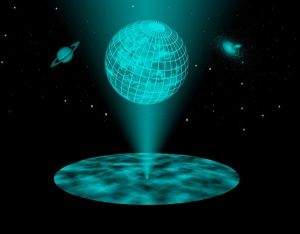| Online: | |
| Visits: | |
| Stories: |

| Story Views | |
| Now: | |
| Last Hour: | |
| Last 24 Hours: | |
| Total: | |
From Science Weekly
Friday, December 11, 2015 10:46
% of readers think this story is Fact. Add your two cents.
Adrian Cho
Working with a few lasers and mirrors, physicists at Fermi National Accelerator Laboratory (Fermilab) in Batavia, Illinois, have been trying to test a wild idea from string theory: that our universe may be like an enormous hologram. Last week, experimenters with the $2.5 million Fermilab Holometer reported that they had found no evidence to support the “holographic principle.” But critics say the test, which uses laser interferometers to look for telltale jitters in spacetime, was on the wrong track to begin with. The holographic principle springs from the theory of black holes, spherical regions where gravity is so intense that not even light can escape. In theory, a black hole has an amount of disorder, or entropy, that is proportional to its surface area. As entropy is related to information content, some theorists conjectured that the maximum amount of information in any volume of space and time, or spacetime, may be proportional to its surface area. The universe would then work like a like a hologram, in which a 2D pattern captures a 3D image. The idea could guide string theorists in their quest to meld the theories of gravity and quantum mechanics. In 2009 the Fermilab researchers dreamed up a way to test the idea by looking for an effect called “holographic noise.” The experiment hasn't found it yet, but the researchers say they'll reconfigure the instruments and try again.
RR
http://ufocon.blogspot.com – The UFO Iconoclast(s)
Source: http://ufocon.blogspot.com/2015/12/from-science-weekly.html




